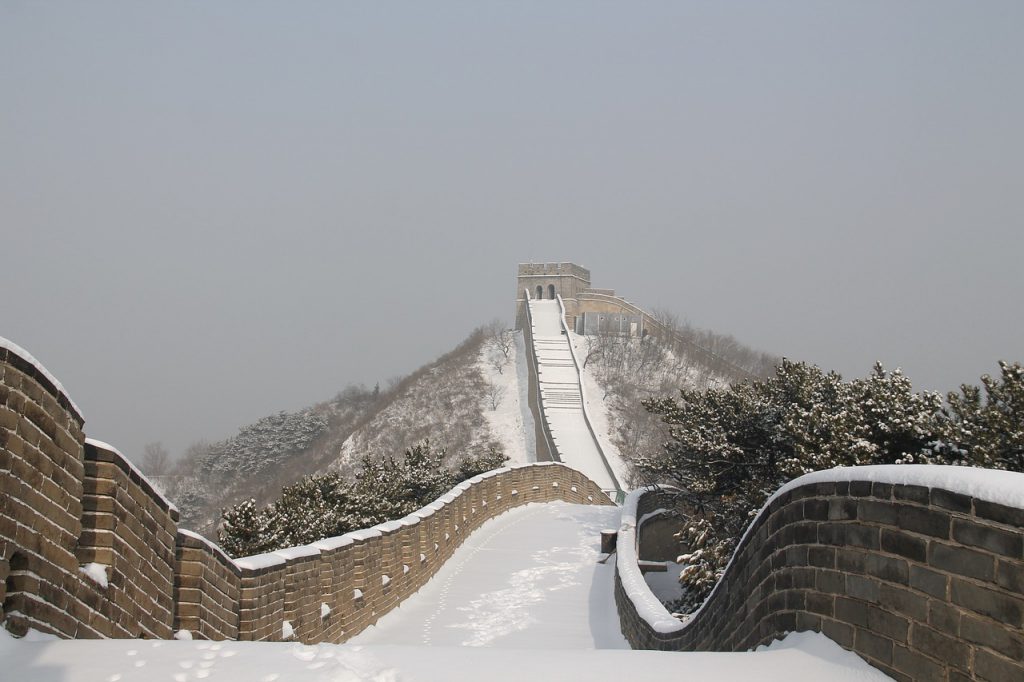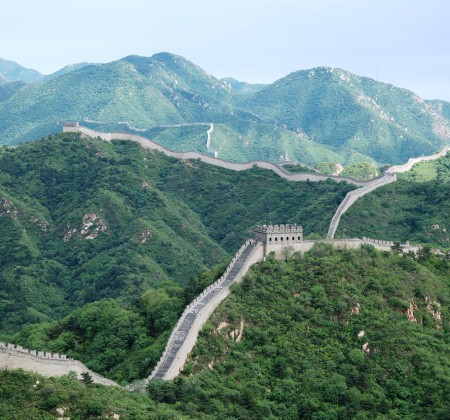What Is the Climate in Beijing Now?
The climate of Beijing is a typical warm temperate semi-humid continental monsoon climate, with high temperature and rainy summer, cold and dry winter and short spring and autumn. In 2007, for example, the annual average temperature was 14.0 ℃ (Beijing Meteorological Bureau). The temperature is-7 ℃ to-4 ℃ in January and 25 ℃ to 26 ℃ in July. The extreme lowest is-27.4 ℃, and the extreme highest is above 42 ℃. The frost-free period for the whole year is 180 to 200 days, which is shorter in the western mountainous area. The average rainfall in 2007 was 483.9 mm, one of the regions with the highest rainfall in North China. The seasonal distribution of precipitation is very uneven. 80% of the annual precipitation is concentrated in June, July and August in summer, with heavy rain in July and August.
The average annual sunshine hours in Beijing is between 2000 and 2800 hours. The maximum value is more than 2800 hours in Yanqing County and Gubeikou, while the minimum value is distributed in Xiayunling, and the sunshine is 2063 hours.
During the rainy season in summer, the number of sunshine hours decreases, and the monthly sunshine hours are about 230 hours. Although the sunshine hours in autumn are not as much as those in spring, they are more than those in summer, with monthly sunshine hours being 230 to 245 hours. Winter is the season with the least sunshine hours in a year. Monthly sunshine hours are less than 200 hours, usually 170 to 190 hours.
On January 9, 2019.
The current temperature is about 0 °C ~ 5 °C, usually wear two pairs of trousers, to keep warm. It is recommended to wear a sweater + coat, and the coat is preferably wind-resistant, such as a woolen coat. Shoes can wear short boots, and some wear long boots. Now they’re all dressed up. There are no rules. Anyway, if you wear less on the inside, you have to wear more on the outside. In general, there is heating in Beijing, so you don’t have to worry about being too cold. It is suggested that the clothes should be thinner on the inside and thicker on the outside, so that the clothes can be easily taken off at that time. It sometimes snows and rains in Beijing, so it is recommended to bring umbrellas, hats, gloves, boots, scarves and so on.
Summary of Temperature in Beijing
Spring: the temperature rises quickly, and the temperature difference between day and night is large. The average monthly temperature can increase by 9 ℃, 4.5 ℃ in March and 13.1 ℃ in April. The temperature is high in the daytime, but the cooling is strong at night, and the temperature is low, which is the season with the biggest temperature difference between day and night. In general, the diurnal range of air temperature is 12 ℃, and the maximum diurnal range is 16.8 ℃. In addition, the cold air activity in spring is still very frequent, due to a sharp drop in temperature, the emergence of “late spring cold” weather, easy to form late frost.
Summer: except for the mountain area, the monthly average temperature in the plain area is above 24 ℃. July is the hottest month of the year, the average temperature is close to 26 ℃, the high temperature is long-lasting and stable, and the temperature difference between day and night is small.
Winter: cold and long. The winter lasts as long as 5 months, and if the average temperature below 0 ℃ is regarded as severe winter, there are 3 months (December to February). In January in the middle of winter, the average temperature in the plain is below-4 ℃, the mountain area is below-8 ℃, and the extreme minimum temperature in the plain is-27.4 ℃.
Climatic Environment in Beijing Area
Beijing belongs to the warm temperate continental monsoon climate zone.
From the division of the global temperature zone, it belongs to the north temperate zone.
From the division of temperature zone in China, it belongs to warm temperate zone.
From the distribution of dry and wet areas in China, it belongs to semi-humid areas.
Beijing has a temperate monsoon climate with four distinct seasons, cold and little snow in winter, hot and rainy in summer. Spring refers to February-April, windy weather, temperature ups and downs, dust, March-1 degrees to 11 degrees, April 7 degrees to 21 degrees; summer refers to May to August, high temperature and hot, heavy precipitation, extreme maximum temperature up to 42 degrees, 13 degrees to 27 degrees in May, 15 degrees to 31 degrees in June, 21 degrees to 31 degrees in July, 20 degrees to 30 degrees in August. Autumn refers to September to October, is the golden season in Beijing, the weather is cool, the wind is not strong, September 14-26 degrees, October 6 to 20 degrees; winter refers to November to January, cold and little snow, extreme minimum temperatures have reached-22 degrees, November-2 degrees to 9 degrees, December-8 degrees to 3 degrees, January-10 degrees to 1 degrees.
What Are the Climatic Characteristics of Beijing?
The weather and climate characteristics of Beijing is located on the east coast of Eurasia. Although the ocean is bordered by the sea to the east, the influence of the ocean on the climate of the city is mainly reflected in summer, and other seasons are mainly affected by the atmospheric circulation in the westerly zone. it is a typical warm temperate semi-humid continental climate. The geographical location and topography of Beijing determine the following characteristics of Beijing’s climate:
the precipitation is concentrated and the precipitation intensity is high. Beijing is located in the channel where the dry and cold air masses of the mainland move to the southeast, and is almost completely controlled by the dry and cold air masses from Siberia from October to May of the following year, and only affected by the warm and humid air masses of the sea for more than three months from June to September. Therefore, the precipitation is mainly concentrated in summer, especially in July and August. The precipitation varies greatly from year to year, and there is a great difference between the rainfall in the rainy year and the dry year.
the regional distribution of precipitation is uneven. The warm and moist air from the southeast is uplifted by the Yanshan and Taihang Mountains, forming a rainy area on the windward slope in front of the mountain and a less rainy area on the leeward slope.
the temperature of the Piedmont plain increased significantly. Due to the blocking of the cold air by the mountains and the effect of sinking and warming, the winter temperature in the Beijing plain is higher than that in the adjacent areas at the same latitude, forming a Piedmont warm area.
the diurnal variation of wind direction is significant.
One Day, the Air Quality Index in Northwest Beijing
According to the actual situation, the air quality index in northwest Beijing has reached 500, the air quality has “exploded”, the northern region has reached a serious to serious pollution level, and the city as a whole is at a level 4 moderate pollution level.
A client reporter from the Beijing Daily noted that at 18:00 today, the hourly PM10 concentration at the northwest Beijing station was 731 micrograms per cubic meter, and the air quality index reached the highest value of 500. In addition, Dingling Station, Changping Town Station, Miyun Station and Huairou Town Station all reached six levels of serious pollution, and the primary pollution was PM10.
The city has issued the first blue warning signal of sand dust this year. It is expected that there will be sand and dust weather in most parts of Beijing from now to the night of the 24th, please take precautions. It is expected that the foreign sand and dust will basically move out of Beijing tomorrow morning, and the air quality will improve.
Further Reading
What is the minimum average temperature in Beijing in January?
What should I wear in Beijing in November?











